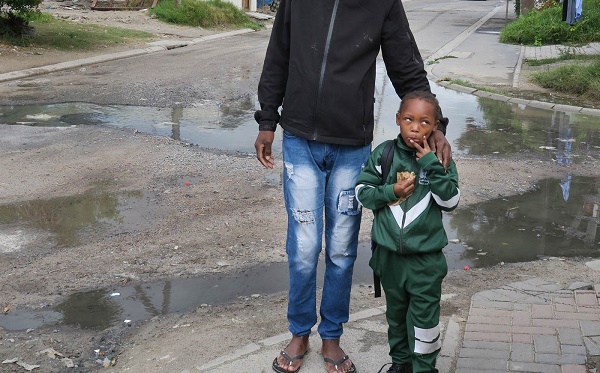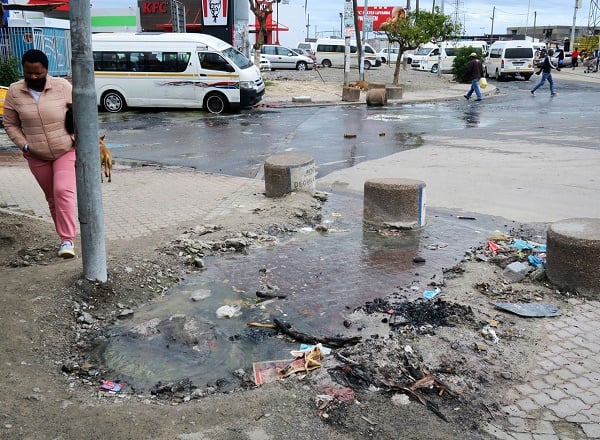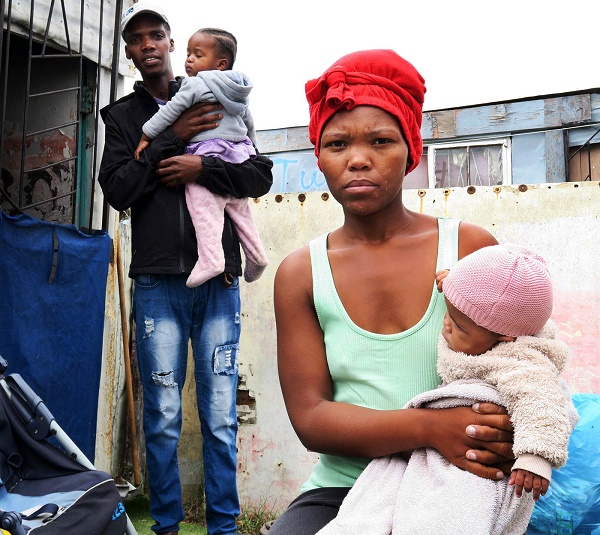Sewage spills such as this one across a busy intersection in Site C, Khayelitsha, Cape Town, have become semi-permanent features in some parts of the city.
Photo by Steve Kretzmann
BY STEVE KRETZMANN || DATA VISUALIZATIONS BY YUXI WANG
With her 18-month-old daughter suffering from acute diarrhoea in mid-February, Novangele Nyikana left the one-room home she shares with her partner and children, and sought help at the Khayelitsha hospital in Cape Town.
Nyikana’s daughter Thina was admitted and spent three weeks being treated for what is the second leading cause of death among young children globally. In Cape Town, 20 children have died due to diarrhoea this summer thus far, according to the city and provincial government spokespersons, Luthando Tyhalibongo and Mark van der Heever, respectively.
Khayelitsha hospital does not have beds for patient attendants to sleep on. Nyikana spent her nights trying to sleep in a chair and got a kidney infection after a week for which she was treated with intravenous antibiotics for seven days. After recovering, she spent another week in the hospital chairs.
Advertisement
Back home in the Taiwan informal settlement of the sprawling and densely populated Khayetlitsa township, her partner, Sicelo Kupe, cared for their three other children. This meant neither Kupe nor Nyikana, who are both unemployed, could look for work opportunities to supplement the meagre income they receive from two child support grants.












